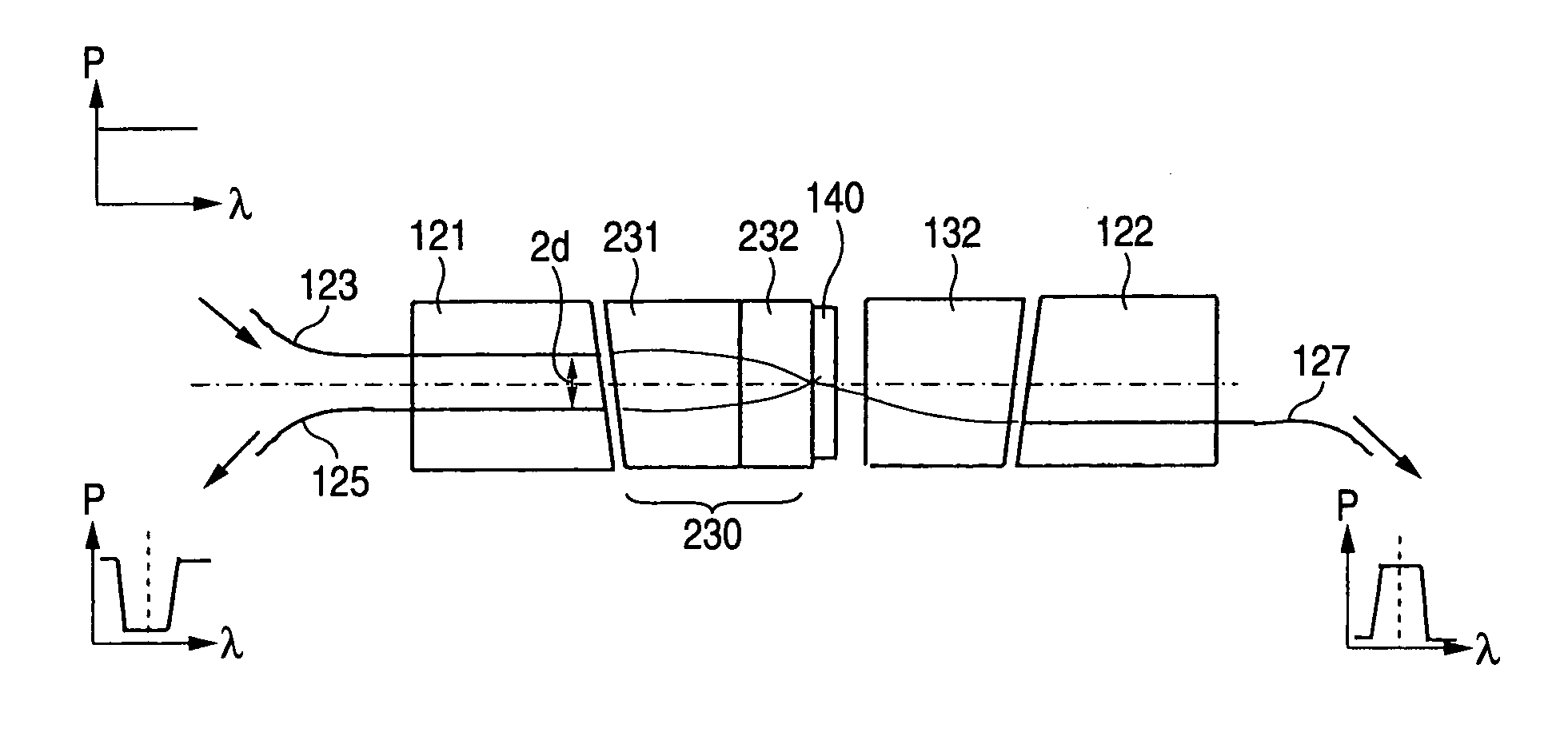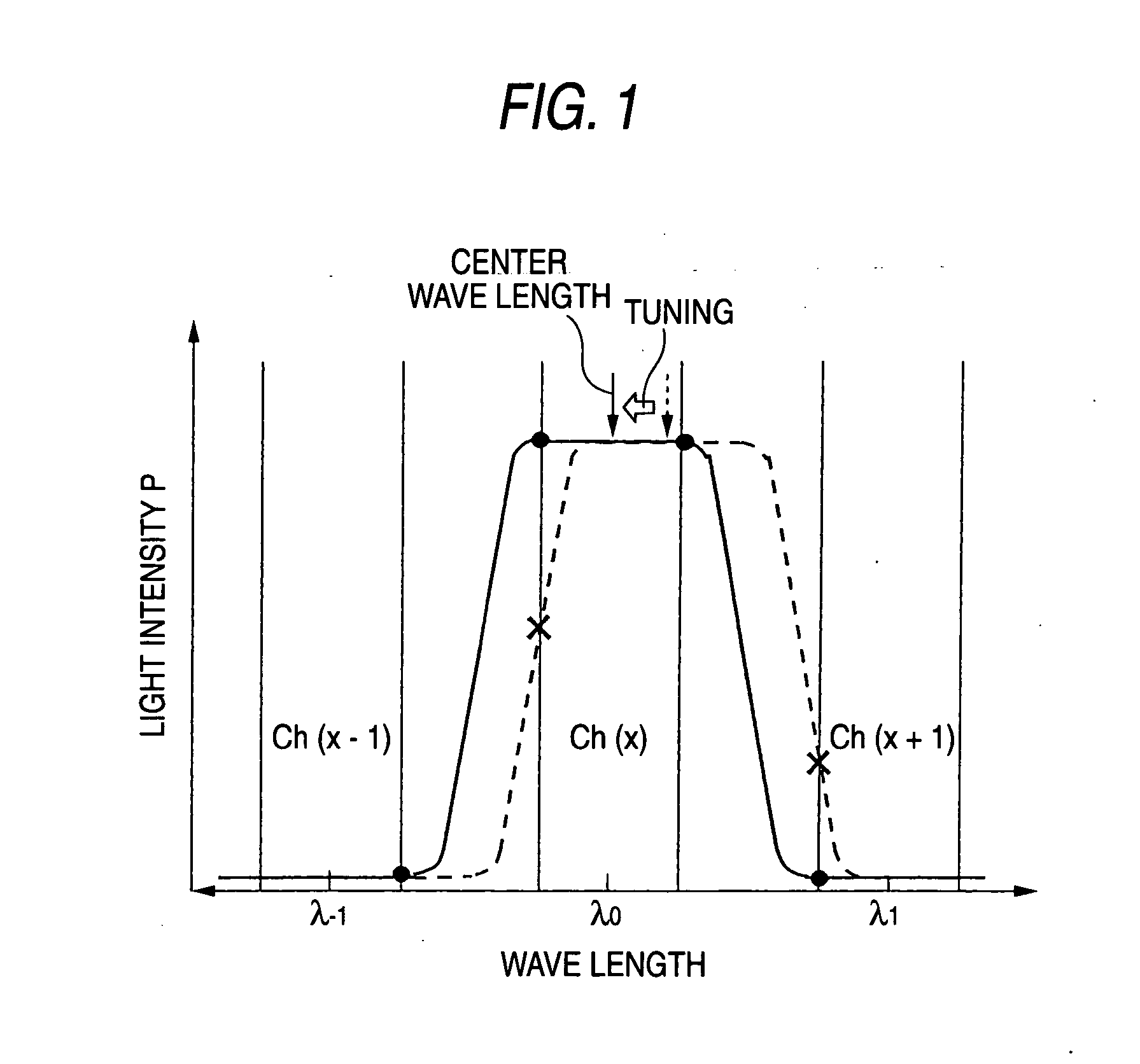Wavelength selective optical device and method of tuning wavelength characteristics
a wavelength-selective, optical device technology, applied in the direction of optics, instruments, optical light guides, etc., can solve the problems of difficult opening two through holes, inability to tune the selected center wavelength over the sufficient range, etc., to achieve the effect of improving the production yield
- Summary
- Abstract
- Description
- Claims
- Application Information
AI Technical Summary
Benefits of technology
Problems solved by technology
Method used
Image
Examples
examples
[0059] Hereinafter, a method of tuning a wavelength and configuring a wavelength-multiplexing optical coupler which is a wavelength selective optical device will be described in detail with reference to the accompanying drawings. In addition, like reference numerals in the drawings denote like elements.
[0060] The present example relates to a wavelength-multiplexing optical coupler having a target center wavelength of a selected bandwidth of 1550.12 nm.
[0061] A dielectric multi-layered BPF having a transmission bandwidth of 0.3 nm was formed on a glass substrate. As illustrated in FIG. 3, a BPF chip (optical filter) 140 is pressed and fixed to an output end 133 of a gradient index rod lens 131 having a refractive index distribution constant √{square root over (A)} of 0.326 mm−1 and a lens length of 0.25 pitches using a jig.
[0062] It is preferable that an input end 135 of the rod lens 131 is inclined to a center axis 137 of the rod lens 131 such that the incident light is prevented...
PUM
 Login to View More
Login to View More Abstract
Description
Claims
Application Information
 Login to View More
Login to View More - R&D
- Intellectual Property
- Life Sciences
- Materials
- Tech Scout
- Unparalleled Data Quality
- Higher Quality Content
- 60% Fewer Hallucinations
Browse by: Latest US Patents, China's latest patents, Technical Efficacy Thesaurus, Application Domain, Technology Topic, Popular Technical Reports.
© 2025 PatSnap. All rights reserved.Legal|Privacy policy|Modern Slavery Act Transparency Statement|Sitemap|About US| Contact US: help@patsnap.com



